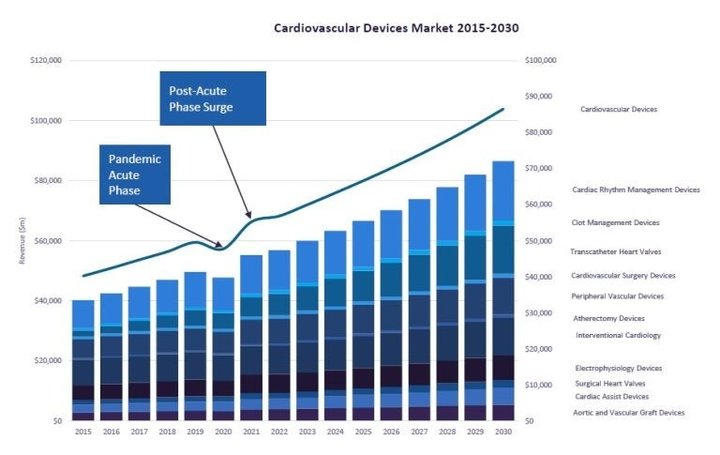Company Insight
Sponsored by Alleima
Advancing diabetes management: why the insulin pumps & CGM market is growing
Advances in the cardiovascular disease (CVD) market are imperative, as CVD remain the leading cause of death globally. In fact, according to the World Health Organization, these heart diseases are responsible for the deaths of an estimated 17.9 million people a year.
Insulin pumps and CGMs have played a crucial role in improving the lives of millions of individuals living with diabetes across the world, offering more convenient and precise methods of managing their blood glucose levels.
According to GlobalData’s analysis, the global CGM and insulin pumps market was valued at $10.6 billion in 2022, which is expected to almost double to $20.8 billion in 2033. The US is leading the market as the prevalence rate of diabetes grows, primarily due to the rising rate of obesity.
Digital healthcare in diabetic management

The Covid-19 pandemic caused a global shock to the medical services market. In some areas, this entailed a sharp surge in demand, leading to lowered inventories and a scramble to fulfil orders. In many areas, disruption was in the form of a sudden drop in demand, with elective and non-essential surgeries curtailed. According to GlobalData analysis, some of the market segments that saw the biggest fall were interventional cardiology, cardiac rhythm management, surgical heart valves, clot management devices, and atherectomy devices. As the pandemic progressed, some restrictions were relaxed to enable hospital procedures to resume.

Diabetes has reached epidemic proportions globally, with the World Health Organization (WHO) estimating that 422 million people have the disease. As diabetes rates continue to rise, the demand for insulin pumps and CGMs as effective diabetes management tools has surged.
The last decade has seen an evolution in the design and functionality of diabetic management tools. These devices have become more user-friendly, offering enhanced features such as automated insulin delivery systems (closed-loop systems) and smartphone connectivity for real-time data monitoring. This has revolutionised diabetes care by providing patients with more precise control over their blood glucose levels. Ongoing research and development in diabetes management aims to provide more advanced insulin delivery systems and CGMs to further enhance the precision and ease of diabetes management.
Growing awareness about the benefits of devices such as insulin pumps and CGMs has led to increased adoption rates among both healthcare providers and patients, which was further catalysed by the growth of remote patient monitoring during the COVID-19 pandemic.
According to Tina Deng, medical device principal analyst at GlobalData: “Many digital diabetes clinics were established during the COVID-19 pandemic. These virtual clinics incorporate digital patient data collected by devices and provide individually tailored suggestions and treatments to patients who were unable or unwilling to visit in person.
“Some digital applications can integrate with other health devices or wearables, such as fitness trackers, blood pressure monitors, or smart scales. This integration enables users to have a comprehensive view of their overall health. The huge amounts of data from electronic medical records, insulin pumps, CGMs, and other wearables, as well as evolving genomic, proteomic, and metabolomics data, can be beneficial in managing diabetes more effectively.”
CGM manufacturing
A CGM device is comprised of a monitor, transmitter and a sensor. The sensor, which is thinner than a needle, detects glucose levels using glucose oxidase and measuring the enzymatic reaction. Electrical signals are generated when the resulting hydrogen peroxide reacts to the sensor, and these signals are sent to the transmitter where they can be transferred to a reading device, such as a mobile phone.
Finding the most suitable medical-wire component is an important step for any medical device manufacturer, and for CGM there are certain features that OEMs must consider. The wire must be long-lasting, biocompatible and offer excellent conductive properties, as well as a suitable insulation coating.
Alleima ultra-fine medical wire is used in medical devices to transmit, sense and stimulate within the human body and can be used in a variety of remotely monitored medical devices, including glucose monitors. For more information about Alleima medical wire components, including available materials and surface treatments, download the whitepaper below.
Contact information
Alleima Advance Materials
1 Commerce Blvd.,
Palm Coast, FL, 32164,
United States
Tel: +1 386 445-2000
Fax: +1 386 447-5113
Email: ms.spc@alleima.com
Alleima Tucson
2424 East Aragon Rd
Tucson, AZ 85756
United States
Tel: +1 520 495 5927
Alleima Zug
Oberallmendstrasse 20a
CH-6300 Zug
Tel: +41 41 761 63 55
Email:sales@alleima.com
Alleima St Imier
Rue de Beau Site 8
CH-2610 Saint-Imier
Tel: +41 32 942 39 20
Email: info@alleima.com